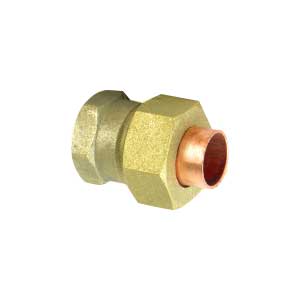

1. Brass gas welding
Due to the low temperature of the gas welding flame, the evaporation of zinc in the brass during welding is less than that when using electric welding, so gas welding is the most commonly used method in brass welding.
The welding wires used in brass gas welding are: wire 221, wire 222 and wire 224, etc. These welding wires contain elements such as silicon, tin, iron, etc., which can prevent and reduce the evaporation and burning of zinc in the molten pool, which is beneficial to ensure the welding seam. performance and prevent porosity. The commonly used fluxes for gas welding brass are solid powder and gas flux. The gas flux is composed of methyl borate and methanol; the flux such as gas flux 301.
2. Brass manual arc welding
In addition to copper 227 and copper 237 for welding brass, homemade electrodes can also be used.
When brass arc welding, the positive connection method of the DC power supply should be used, and the electrode should be connected to the negative electrode. The surface of the weldment should be carefully cleaned before welding. Generally, the groove angle should not be less than 60~70º. In order to improve the weld formation, the weldment should be preheated at 150~250℃. During operation, short arc welding should be used, no lateral and forward and backward swings, only linear movement, and the welding speed should be high. Brass weldments in contact with corrosive media such as seawater and ammonia must be annealed after welding to eliminate welding stress.
3. Manual argon arc welding of brass
Brass manual argon arc welding can use standard brass welding wires: wire 221, wire 222 and wire 224, and can also use materials with the same composition as the base metal as the filler material.
The methods of welding red copper (that is, the so-called industrial pure copper) include gas welding, manual carbon arc welding, manual electric arc welding and manual argon arc welding, and automatic welding can also be used for large structures.
1. Gas welding of copper
Butt joints are most commonly used for welding copper, and lap joints and T-joints are used as little as possible. Gas welding can use two kinds of welding wires, one is welding wire containing deoxidizing elements, such as wire 201, 202; the other is ordinary copper wire and cutting strip of base metal, using gas agent 301 as flux. Neutral flame should be used when gas welding red copper.
2. Manual arc welding of copper
In manual arc welding, red copper electrode copper 107 is used, and the welding core is red copper (T2, T3). Weld edges should be cleaned before welding. When the thickness of the weldment is greater than 4 mm, it must be preheated before welding, and the preheating temperature is generally around 400~500 °C. For welding with copper 107 electrode, the power supply should be reversed by DC.
A short arc should be used during welding, and the electrode should not swing laterally. The reciprocating linear motion of the electrode can improve the formation of the weld. For long welds, a gradual de-welding method should be used. The welding speed should be as fast as possible. When multi-layer welding, the slag between the layers must be completely removed. Welding should be carried out in a well-ventilated place to prevent copper poisoning. After welding, use a flat hammer to strike the weld to relieve stress and improve weld quality.
3. Manual argon arc welding of copper
In the manual argon arc welding of red copper, the welding wires used are wire 201 (special copper wire) and wire 202, and copper wire, such as T2, is also used.
Before welding, the oxide film, oil and other dirt on the welding edge of the workpiece and the surface of the welding wire must be cleaned to avoid defects such as pores and slag inclusions. The cleaning methods include mechanical cleaning and chemical cleaning.
When the plate thickness of the butt joint is less than 3 mm, no bevel is opened; when the plate thickness is 3-10 mm, a V-shaped bevel is opened, and the bevel angle is 60-70º; when the plate thickness is greater than 10 mm, an X-shaped bevel is opened. The bevel angle is 60~70º; in order to avoid incomplete penetration, generally no blunt edge is left. According to the thickness of the plate and the size of the groove, the assembly gap of the butt joint is selected within the range of 0.5 to 1.5 mm.
Manual argon arc welding of red copper usually adopts DC positive connection, that is, the tungsten electrode is connected to the negative electrode. In order to eliminate pores and ensure reliable fusion and penetration at the root of the weld, it is necessary to increase the welding speed, reduce the consumption of argon gas, and preheat the weldment. When the plate thickness is less than 3mm, the preheating temperature is 150~300℃; when the plate thickness is greater than 3mm, the preheating temperature is 350~500℃.
The preheating temperature should not be too high, otherwise the mechanical properties of the welded joint will be reduced. There is also carbon arc welding of red copper. The electrodes used in carbon arc welding include carbon electrodes and graphite electrodes. The welding wire used in carbon arc welding of red copper is the same as that used in gas welding, and the base metal can also be used to cut strips.
Welding can use DC positive connection or AC. When welding with AC, the evaporation of zinc is lighter than when welding with DC. Usually, there is no need to preheat before welding, and it is only preheated when the difference in plate thickness is relatively large. Welding speed should be as fast as possible. After welding, the weldment should be heated at 300~400℃ for annealing treatment to eliminate welding stress and prevent the weldment from cracking during use.
